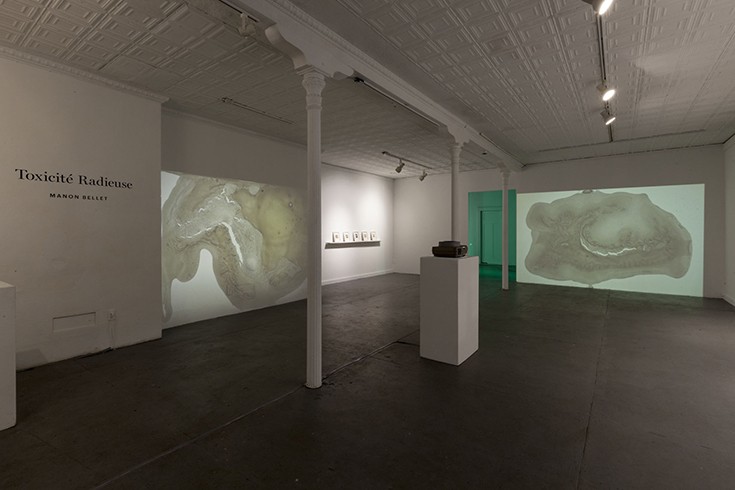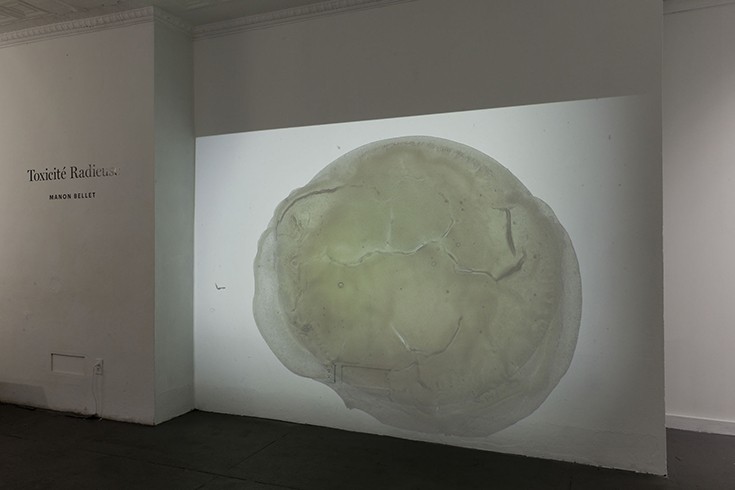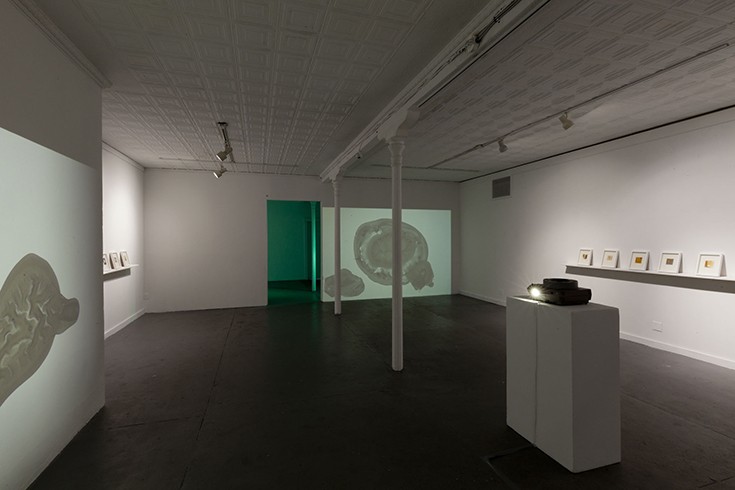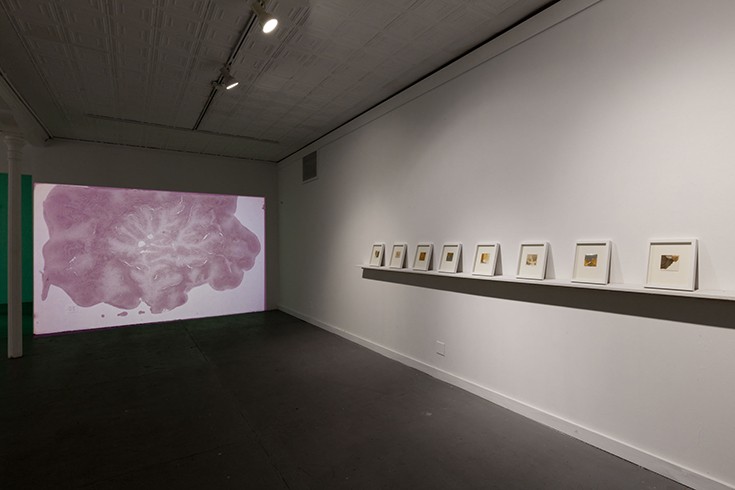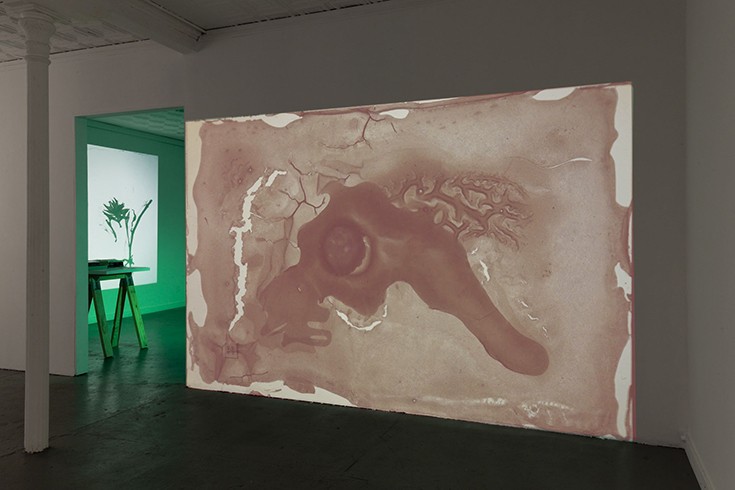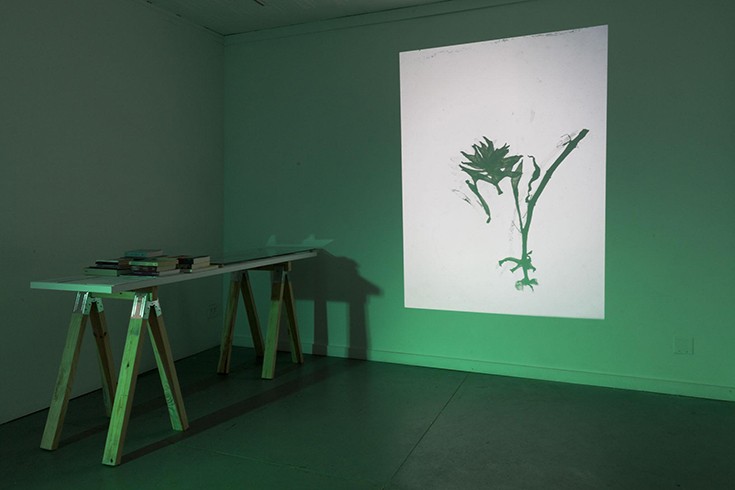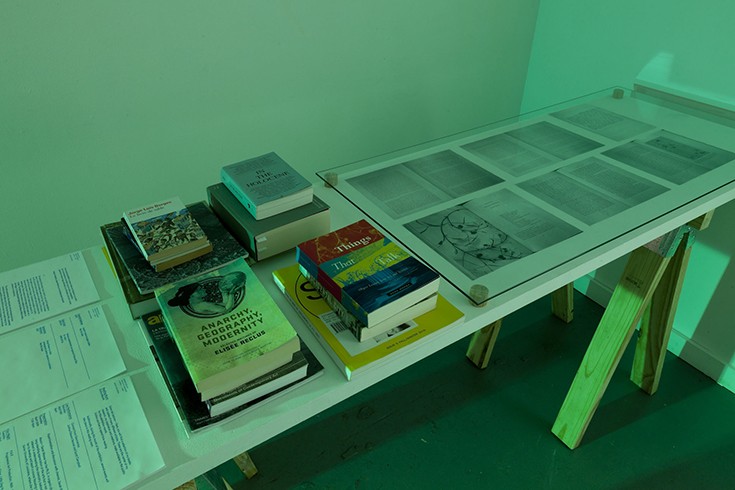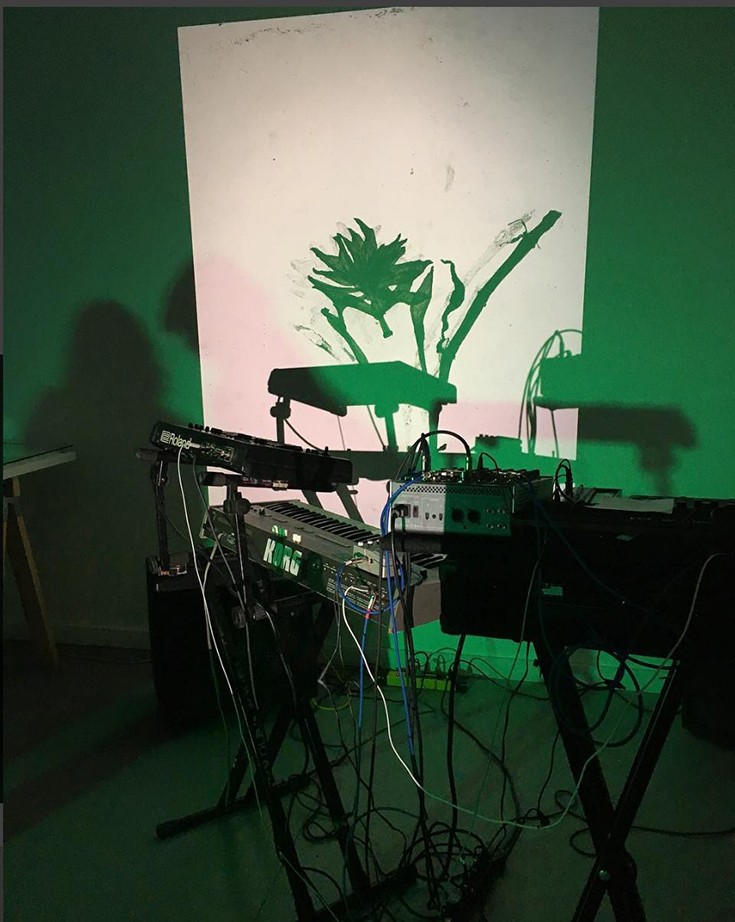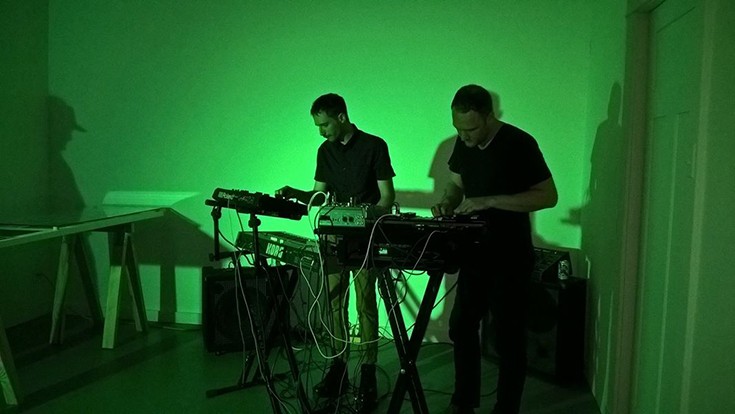Toxicité Radieuse, 2017
Installation view. Good Children Gallery, New Orleans, US
The show Toxicité radieuse (Radiant toxicity) offers a snapshot of the artist’s experiments. Everything seems frozen and paradoxically in eternal movement.
By using crystal liquid Ink on Glas slide as well as on canvas Manon Bellet reveals to us a chemical and thermal process which becomes visible only by the heat of the projector or in the case of the paintings by the light illuminating the piece. The work change slowly in the front of our eyes, It lives or survives under extreme heat. Thus giving a living aspect to the work, able to correspond to our own environment, in perpetual change and endangering.
The toxicity of the chemical mixture that could in a natural environment frighten us. Ended up seducing us by its radiations.
In the back room of Good Children Gallery, Bellet has set up a reading library, giving a peek into her practice and highlighting texts on Metzger, as well as the delicate “Glass Flowers” at the Harvard Museum of Natural History, which were created as tools for botany research in the late 19th and early 20th centuries. An essay by science historian Lorraine Daston—excerpted in the gallery in a display case on saw horses—describes an irreconcilable tension between the flowers’ glassy objecthood and their use as stand-ins for the species they so carefully mimic. Daston’s words form a backdrop for one final work, a green-toned projection of a single slide that encases dried specimens of endangered plant species from Louisiana. In the face of a rapidly eroding coastline, the stark outlines within Geocarbon Minimum, 2017, are a tiny monument in the face of the knowledge that this time and place will one day be gone forever, perhaps sooner than we expect.
—Extract from Manon Bellet / Charlie Tatum (second part)
—Photography: Jonathan Traviesa
